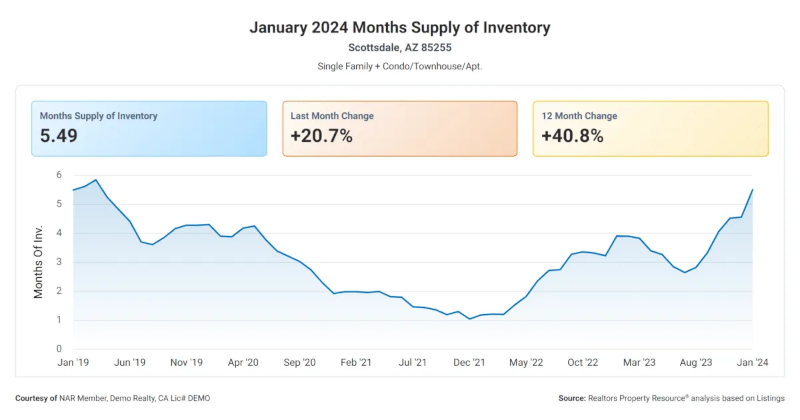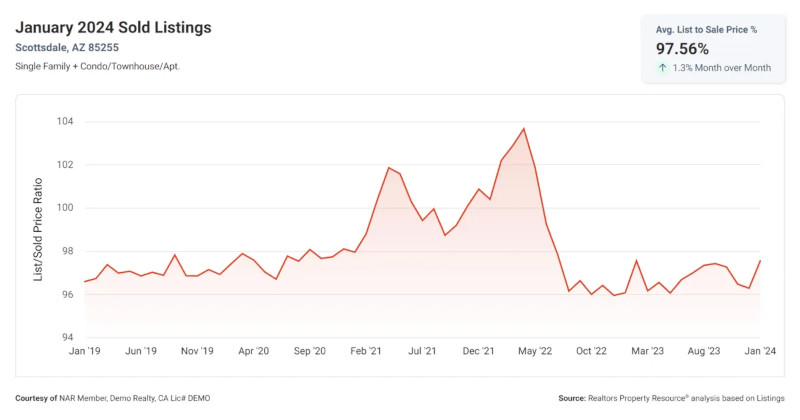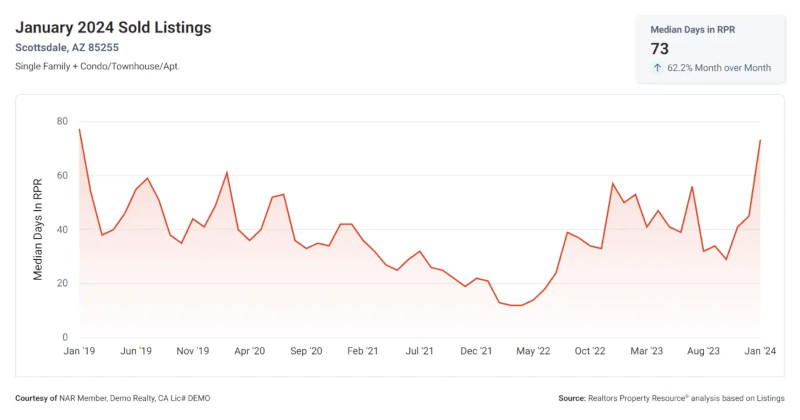You are viewing our site as an Agent, Switch Your View:
Agent | Broker Reset Filters to Default Back to ListAnticipating Market Trends: A Data-Driven Approach for REALTORS with RPR
February 20 2024
 The real estate market is known for being dynamic, with prices and inventory levels constantly changing. For REALTORS®, the key to success is making well-informed projections based on solid data. RPR (Realtors Property Resource®) serves as an invaluable tool, offering a depth of historical and current market data that can provide clues to what lies ahead.
The real estate market is known for being dynamic, with prices and inventory levels constantly changing. For REALTORS®, the key to success is making well-informed projections based on solid data. RPR (Realtors Property Resource®) serves as an invaluable tool, offering a depth of historical and current market data that can provide clues to what lies ahead.
In this article, we'll explore how leveraging RPR Market Trends and other vital data points can inform the decision-making process and help you craft strategies that align with the expected ebb and flow of future market conditions.
The Predictive Power of Historical Data
While historical data isn't a blueprint for the future in real estate, it often provides valuable clues that can help shape our forecasts. By analyzing past and present data, REALTORS® can recognize signs of what's to come.
For instance, a consistent decrease of Median Days in RPR in a specific area can indicate increasing buyer interest, prompting a strategy to price new listings competitively.
Key Market Trend Indicators for Anticipating Future Changes
When starting, there are so many metrics to choose from, but two key indicators stand out: Month's Supply of Inventory and List to Sold Price averages (the average percentage difference between listing prices and final sale prices). These figures do more than summarize the past—they showcase potential future developments.
Months Supply of Inventory
Months Supply of Inventory indicates how long the current inventory would last at the present sales rate if no more listings were added. A low number suggests a seller's market and a high number points toward a buyer's market. Take, for example, an inventory that decreases over consecutive months—this trend could signal a growing seller's market. By recognizing this early, a REALTOR® might advise sellers to list sooner or buyers to act fast. RPR's graphs turn complex data into visual stories that are easy to read and act on.

Average List to Sale Price
Looking at past List to Sold Price Average Percentages offers a clear picture of the market's bargaining behavior. If this percentage rises, sellers gain more negotiation power, and listing prices should be set accordingly. Average Sold Prices serve as the benchmark—when aligned with a specific neighborhood's pricing trends, REALTORS® can more accurately advise clients on offers to make or accept.

Time on Market and Seasonal Forecasts
Median Days in RPR can be a powerful metric to estimate better how quickly properties will sell in the future. A downward trend typically indicates increasing demand, leading to a faster-paced market. For instance, a REALTOR® observing a shortened time on the market during spring can capitalize by listing properties when buyer activity begins to climb. Seasonal graphs in RPR help predict these cyclical shifts, aiding in timing the market perfectly.

- See Market Trends in Action: Get a close look at the dynamic real estate landscape with RPR's Market Trends.
Short-Term vs. Long-Term Market Changes
Market analysts know the devil is in the details of short-term (last month) and long-term (12-month changes) trends. While the former offers a snapshot, the latter shows the market evolving. For example, if condo sales are on the rise over the last month, but single-family homes have seen steady growth over a year, REALTORS® can tailor their property focus and marketing campaigns to align with these trends.
Incorporating Additional Economic Indicators
No market exists in a vacuum. Supplementing RPR data with additional economic indicators like mortgage interest rates or local employment stats paints a more complete picture. For instance, a low unemployment rate might encourage higher listing prices due to increased buying power—RPR's integration of these economic elements ensures REALTORS® have a comprehensive view.
- Take Market Trends Further: For those eager to dive deeper into Shareable Market Trends, there are lots of resources available. Visit RPR's learning center for a webinar, tutorials and ebooks that will sharpen your analytical skills.
Use RPR's Historical Data to Anticipate Future Market Trends
Predictive analytics is no longer just an advantage—it's necessary for REALTORS® who want to thrive in a competitive marketplace. By interpreting RPR Market Trends, you'll understand where the market has been and, more importantly, where it's headed.
Embrace RPR's historical data to create a vision for the future, and let its powerful insights inform your strategic decisions.
To view the original article, visit the RPR blog.









